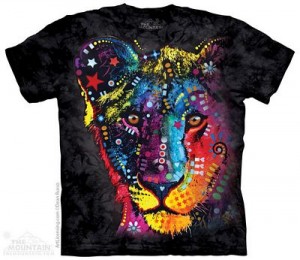Feed aggregator
Abandoned Places – Book Review by Fred Patten
Did a quick doodle of my fursona. It's also the first anthro drawing i have done. Opinions?
What Kind of World Do You Prefer Your Anthropomorphic Characters To Inhabit?
Do you like a world where anthro animals replace humans? If so, is that world basically ours but with furries replacing people or is it a more fantasy based realm? Or do you like worlds where humans and furries live together? How about societies ruled by feral animals?
submitted by VctrBnsn[link] [31 comments]
Hey guys, could you fill out my form real quick?
Would you rather be friends with your fursona or have a relationship with your SO's fursona?
Since I don't have a SO i'd be friends with my sona.
submitted by FrostSkyreach[link] [103 comments]
Episode 86 – FurDU Guestapalooza Day Two - Killick returns on the second day of FurDU 2015 for a more relaxed and chilled out podcast. This time he catches up with good friend Sabre and the literaterrific Jay Stoat, author of Axinstone, and Impossible Ma
Killick returns on the second day of FurDU 2015 for a more relaxed and chilled out podcast. This time he catches up with good friend Sabre and the literaterrific Jay Stoat, author of Axinstone, and Impossible Magic. We discuss panels and the con so far, as well Jay’s latest book Reborn (which you can totally buy at Jaffa Books).
Stay tuned for the final day of FurDU 2015, coming later this week.
Bye for now, but not forever!
Episode 86 – FurDU Guestapalooza Day Two - Killick returns on the second day of FurDU 2015 for a more relaxed and chilled out podcast. This time he catches up with good friend Sabre and the literaterrific Jay Stoat, author of Axinstone, and Impossible Magic.Danger Mouse 2015: Any preview images?
Saw that there was a 2015 remake of Inspector Gadget (60% likes; 3D CGI) and found out about Danger Mouse. I loved watching Danger Mouse and Count Duckula. I hope it does alright. I hated the Inspector Gadget movies. It didn't translate well that Gadget was a bumbling idiot.
submitted by electricfoxx[link] [1 comment]
Sydney, Australia furries?
Hey! I've been wondering if there are going to be any events / meet ups for furries that live in Sydney, Australia. I've heard of furdu in Melbourne but just don't have the funds to go there.
Anyone else know about anything fur related in NSW, Australia?
Also looking for furiends too :3
submitted by grimreaper5650[link] [3 comments]
sketch for potential piece...not sure what style to go for here! (digitally painted or lined + colored "regularly")
I Like That Animal On Your Chest
Another one of those huge collections of animal-based t-shirts can be found at the Sweet Earth Art web site. It’s actually an artist collective for creative people working in several media, but click on their Art Clothing link and you’ll be taken right to their t-shirt page. Then give yourself some time for browsing… it might take you a while to get through them all!

image c. 2015 Sweet Earth Art
I Finnaly learned what it's like to hate your body
So a while ago I met this person, he became my best friend, and than my boyfriend, and as i hung out with him he found a part of me that i never even knew existed. The part that just doesn't care and wants to be happy. As i am i am a 6' 2" dude who can grow a beard in a day, and for the longest time i took pride in it but really I wasn't proud of myself, just how others saw me, he helped me realize I've always wanted something different. Truth is i prefer feminine traits more than the masculine ones I have, I want cute not cool, I'd rather be short than tall, I'd rather be held than hold someone else, but I also realize that's something that could never be. sorry for sroppin some emotional shit, I love this subreddit.
submitted by MorningFox[link] [10 comments]








